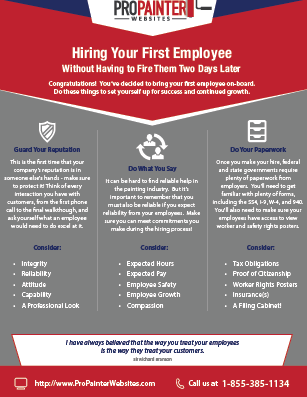Important Seasonal Aspects Of Commercial Exterior Painting: What You Need To Recognize
Important Seasonal Aspects Of Commercial Exterior Painting: What You Need To Recognize
Blog Article
Developed By-Korsholm Urquhart
When you're planning a business external painting project, seasonal variables can make or damage your results. You'll wish to take into consideration exactly how temperature level and moisture impact paint application and drying times. Picking the right season can guarantee your paint adheres effectively and lasts much longer. Yet which periods are really the most effective for this type of job? Allow's check out the key elements that can influence your project's success.
The Impact of Temperature Level on Paint Application
When you're preparing a business exterior paint task, the temperature can significantly influence just how well the paint sticks and dries out.
Preferably, you wish to repaint when temperatures range between 50 ° F and 85 ° F. If it's also cold, the paint may not heal correctly, bring about issues like peeling off or breaking.
On the other hand, if it's as well warm, the paint can dry out also quickly, protecting against correct attachment and leading to an irregular finish.
You need to additionally think about the time of day; early morning or late afternoon supplies cooler temperatures, which can be more beneficial.
Constantly inspect the supplier's recommendations for the details paint you're utilizing, as they typically offer advice on the perfect temperature array for optimal results.
Moisture and Its Result on Drying Times
Temperature isn't the only environmental aspect that affects your commercial outside painting project; moisture plays a significant role also. High humidity degrees can reduce drying out times dramatically, affecting the overall top quality of your paint job.
When the air is filled with moisture, the paint takes longer to cure, which can lead to issues like inadequate adhesion and a greater risk of mildew development. If you're repainting on a specifically moist day, be gotten ready for extensive delay times between layers.
just click the following web page to keep an eye on local climate condition and strategy as necessary. Preferably, go for humidity levels in between 40% and 70% for optimal drying out.
Maintaining these factors in mind guarantees your job stays on track and delivers a lasting coating.
Best Seasons for Commercial Exterior Painting Projects
What's the very best season for your business outside paint jobs?
Spring and early fall are usually your best choices. During these periods, temperature levels are mild, and moisture degrees are often reduced, creating suitable conditions for paint application and drying.
Stay clear of summer season's intense heat, which can cause paint to dry also swiftly, resulting in poor adhesion and coating. Likewise, winter months's cool temperatures can impede correct drying and treating, running the risk of the longevity of your paint work.
Aim for days with temperature levels between 50 ° F and 85 ° F for optimal results. Keep in mind to examine the neighborhood weather report for rain, as damp problems can destroy your job.
Planning around these variables ensures your painting project runs efficiently and lasts much longer.
Conclusion
Finally, preparing your commercial external painting tasks around seasonal considerations can make a significant difference in the result. By scheduling work throughout the suitable temperatures and humidity levels, you'll make sure far better adhesion and drying out times. Bear in mind to watch on local weather prediction and select the correct time of year-- springtime and very early loss are your best options. Taking visit the up coming internet site will certainly assist you attain a resilient and specialist finish that lasts.
